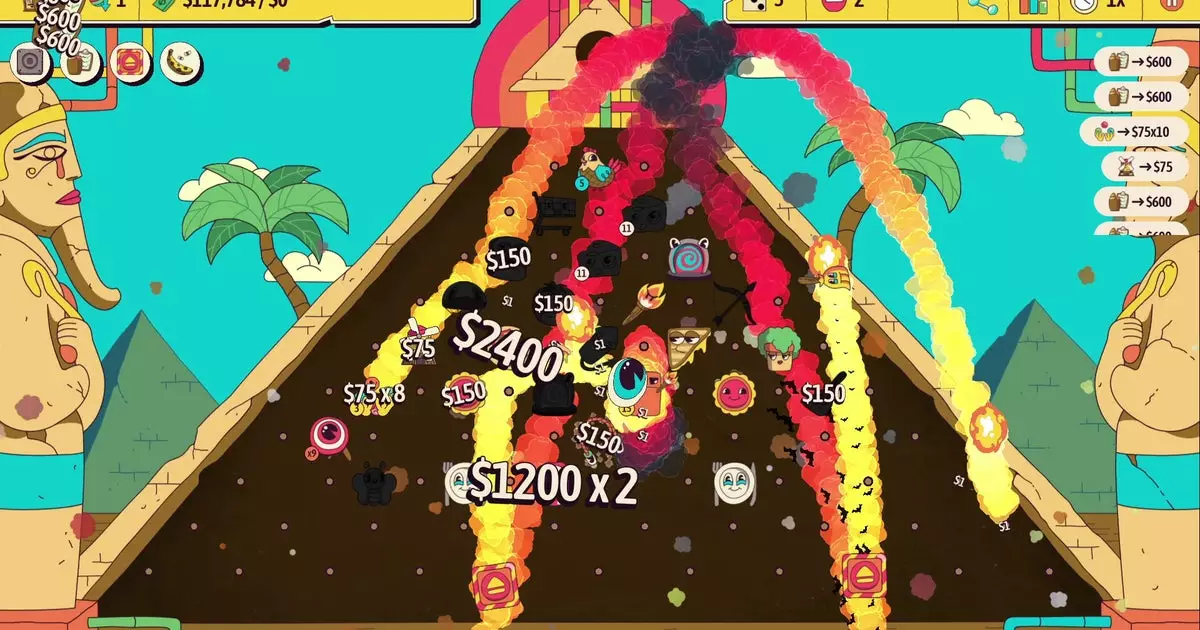The landscape of video game releases is marked by a unique paradox: there is no universally perfect time to launch a title. Yet, strategic timing can significantly influence a game’s reception and sales. Surprisingly, some developers opt to align their releases with major industry events or during crowded periods, banking on heightened visibility, despite potential drawbacks. One decision stands out: launching a game when consumers’ wallets are exhausted from holiday shopping and during a major awards show, which can distract media attention. This tactic seems to be the approach taken by the upcoming game Ballionaire, which is set for release on December 10th.
At first glance, the term “pachinko-inspired” may evoke associations with chaotic gameplay and engaging visuals reminiscent of previous roguelikes, such as Peglin. However, Ballionaire carves its own niche within this genre. Unlike the familiar combat scenarios wherein players engage in strategic confrontations, Ballionaire invites players to become architects of their own gaming experience. The core mechanic revolves around designing a pachinko board filled with diverse pegs that affect gameplay outcomes as players drop their balls onto the board.
This innovative design sets a foundation for unique interactions. For instance, players can incorporate pegs that not only alter the ball’s trajectory but also introduce game-changing elements such as teleportation mechanics—adding layers of unpredictability and strategy. The game consequently transforms each run into a distinct experience, urging players to think critically about their board design in pursuit of maximizing their cash collection.
Ballionaire distinctly embodies the principles of the roguelike genre with its run-based gameplay. Each session stands alone while contributing to the larger progression of the game, whether through upgrades between runs or varied board designs. This structure ensures no two gaming experiences are alike, beckoning players back for more experimentation. The introduction of a sandbox mode adds an additional layer of appeal, allowing players to explore without constraints and focus solely on the tactile joy of creating and modifying their pachinko boards.
Moreover, the inclusion of mod support is particularly commendable. It democratizes the game’s development, inviting players to not only play but also contribute to the game’s lifecycle through custom gadget designs. This can foster a vibrant community and ensure longevity, as players exchange ideas and smoothly integrate their creations into the overall gameplay.
Early impressions of Ballionaire, as indicated by tester reactions from events such as Next Fest, have been positive. Player feedback is essential in wetting the appetite of future audiences. The anticipation surrounding its full release illustrates a growing eagerness within the gaming community to dive into a fresh gameplay experience.
In the rapidly evolving world of game releases, timing, mechanics, and community engagement are vital ingredients for success. As December 10 approaches, the industry watches eagerly to see if Ballionaire can effectively leverage its strategic launch while setting a new standard in innovative gameplay. Ultimately, the success of this endeavor will likely hinge on the balance of creativity and player experience it delivers.

